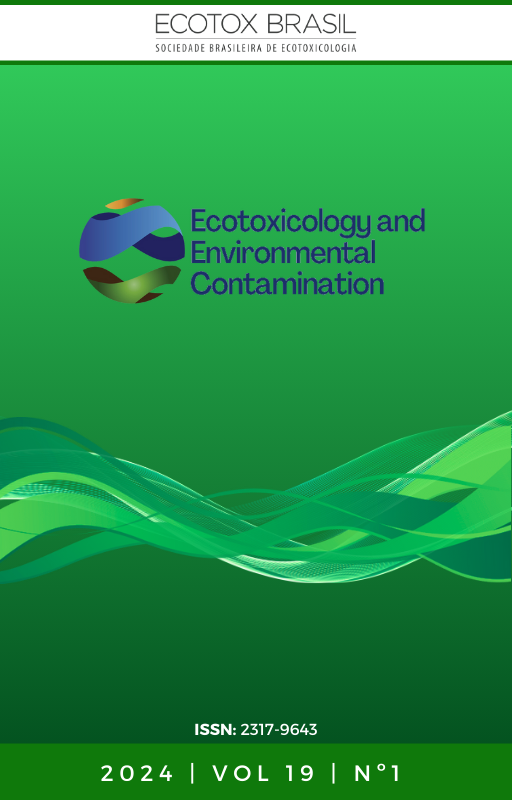Degradation Kinetics of Antifouling Biocides in Sediment During the Spiking Equilibrium Phase
DOI:
https://doi.org/10.5132/eec.2024.01.05Palabras clave:
antifouling biocides, DT50, pollution, ecotoxicology, sediment spikingResumen
The new generation of antifouling biocides, as well as other emerging contaminants, has not yet been included in sediment quality guidelines or present standard protocols for sediment spiking. Most of these biocides have short half-lives in water, but little information is available regarding their degradation in sediments. Thus, there is a need to establish a reliable duration of the equilibrium phase for sediment spiking prior to sediment toxicity testing to determine the actual exposure concentrations during ecotoxicological tests. This study aimed to evaluate the degradation of DCOIT, Irgarol, Diuron, and Dichlofluanid during a spiking equilibrium phase of 24 h at three different time intervals (0, 6, and 24 h) and concentrations (10, 100, and 1000 ng g-1), by applying kinetic degradation models. The models presented a better fit for the 1000 ng g-1 treatments, in which the half-lives of DCOIT and Diuron were < 5 h, Dichlofluanid < 2 h, and Irgarol < 6h. Our results also indicate that, except for Dichlofluanid, the degradation rates of the other antifouling biocides were reduced dramatically after 6 h of equilibrium. Therefore, an equilibrium phase of 24 h (or greater than 6 h) was considered viable for sediment spiking. Our findings provide valuable information to guide future sediment toxicity tests using these compounds.
Descargas
Publicado
Cómo citar
Número
Sección
Licencia
Derechos de autor 2024 Ecotoxicology and Environmental Contamination

Esta obra está bajo una licencia internacional Creative Commons Atribución 4.0.
Copyright © 2006 ECOTOX-Brasil
Copyright notice: It is a condition for publication that manuscripts submitted to this journal have not yet been published and will not be simultaneously submitted or published elsewhere. By submitting a manuscript, the authors agree that copyright for their article is transferred to the Sociedade Brasileira de Ecotoxicologia (ECOTOX-Brasil) if and when the article is accepted for publication. The copyright covers the exclusive rights to reproduce and distribute articles, including reprints, photographic reproductions or any other reproduction of a similar nature, including translations. No part of this publication may be reproduced, stored in a retrieval system or transmitted in any form or by any means, electronic, mechanical, photocopying, recording or otherwise, without permission of the publisher.
Notice: While every effort is made by the EEC, editors and editorial board to see that no inaccurate or misleading data, opinions or statements appear in this journal, they wish to make it clear that the contents of the articles and advertisements published herein are the sole responsibility of the contributors or advertisers concerned. Accordingly, the EEC, the editorial board and editors and their respective employees, officers and agents accept no responsibility or liability whatsoever for the consequences of any inaccurate or misleading data, opinion or statement.








